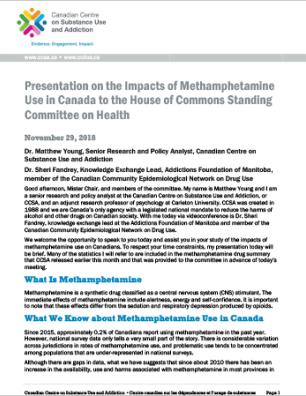Presentation on the Impacts of Methamphetamine Use in Canada to the House of Commons Standing Committee on Health
Canadian Centre on Substance Use and Addiction
- Illegal Drugs
Featured Image
Image

Read this speaking notes
About this speaking notes
Summarizes the impacts of methamphetamine use in Canada, as presented to the House of Commons Standing Committee on Health. This presentation concludes that the government could capitalize on investments made to address the opioid crisis by using them to address the increase in the use of methamphetamines.